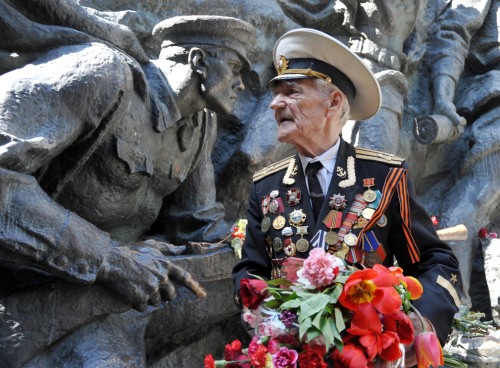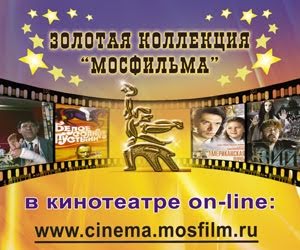I’m catching up with some of my RSS subscriptions, so this is a few days late. On May 9th, Russia and other ex-USSR countries celebrate the Victory Day over the Nazi Germany in the World War II. Big Picture has an excellent collection of photos covering the celebrations.
Tag: Russia
Mosfilm Gold Collection on YouTube
Excellent news for all the fans of old Soviet movies: Mosfilm, one of the biggest movie studios in Russia, created a partner channel on YouTube. They will upload a lot of the classics in full length, good quality, and with English subtitles. Approximately 20 movies are already uploaded, and Mosfilm has promised to upload at least 5 full featured films every week. By their own calculations, there will be more than 200 movies on that channel by the end of the 2011. And all that content absolutely free!
This is Russia
This made me smile today.
[youtube=http://www.youtube.com/watch?v=wOPuvTMndIs]
Pages of history
Yesterday I came across this collection of nostalgic photographs that bring back memories from the USSR times. I was too young to see some of those images in real life, but they still have meaning to me. Most though are as they were back then.
Yet, these are staged photographs of some every day items. Today I came across something much more real and something much more dramatic. It is again a collection of images, but in a video form. The video shows the staggering difference between the modern day Saint Petersburg and Leningrad (as it was called back then) during the Siege. As Wikipedia puts it: “It was one of the longest and most destructive sieges in history and one of the most costly in terms of human casualties”. It lasted for 872 days and it took lives of millions of people. As per Wikipedia: 1,017,881 were killed, captured, or missing and 2,418,18 wounded or sick from the Red Army forces. Civilian casualties are in the numbers of 642,000 during the siege and 400,000 at evacuations. These are only those numbers that were verified. In reality that was much more.
[youtube=http://www.youtube.com/watch?v=SQ9LGdamU20]
Yaroslavl Roadmap 10-15-20
There were plenty of news recently about Russia in general and its president Dmitry Medvedev in particular taking steps towards building up some technology innovation in the country. Medvedev visited a number of technology companies in the Silicon Valley. And there were a few announcements about some sort of technology center being built in Skolkovo, next to Moscow. Most Russians that I’ve talked to about this are very skeptical (me included).
In fact, I’m not even interested on how this project goes now and who is involved with it. At least, not in Russia. But there are some interesting developments internationally. One example in particular that I want to mention is Yaroslavl Roadmap 10-15-20.
As part of the Skolkovo project, Russian government requested some expert help on figuring out the best approach and course of action. One source of such expert advise came from the New York Academy of Science. In fact, I think they have done some spectacular research and managed to summarize it in a very concise report. They titled it “Yaroslavl Roadmap 10-15-20: 10 Years to Implement, 15 Steps to Take, 20 Pitfalls to Avoid—International Experience and the Path Forward for Russian Innovation Policy” (PDF, 3.7 MB, 128 pages).
In essence, it is a very compact review of how technological innovation was formed and grown in Israel, Finland, Taiwan, India, and USA. It summarizes they key points, successes and failure. It also briefly describes the specifics of each country and how those specifics affected the chosen path. It then describes the key specifics of Russia. Once all that is done, a roadmap is presented, with both generic bullet points and a time table of steps that have to be taken.
And even if my feeling is that this whole work will be completely ignored in Russia, I still think that the report has plenty of interesting information for a lot of other people. If you work in, with, or near technology, you should download the PDF and at least scroll through it. If you ever were interested in Silicon Valley, how it came to be, and if or how it can be created somewhere else, then you should definitely download the report.
I downloaded it a few days ago and barely looked through it, but even that alone gave me plenty to think about. But there is way more than that. It needs careful reading and studying, which I will do the soonest. Brilliant stuff!


